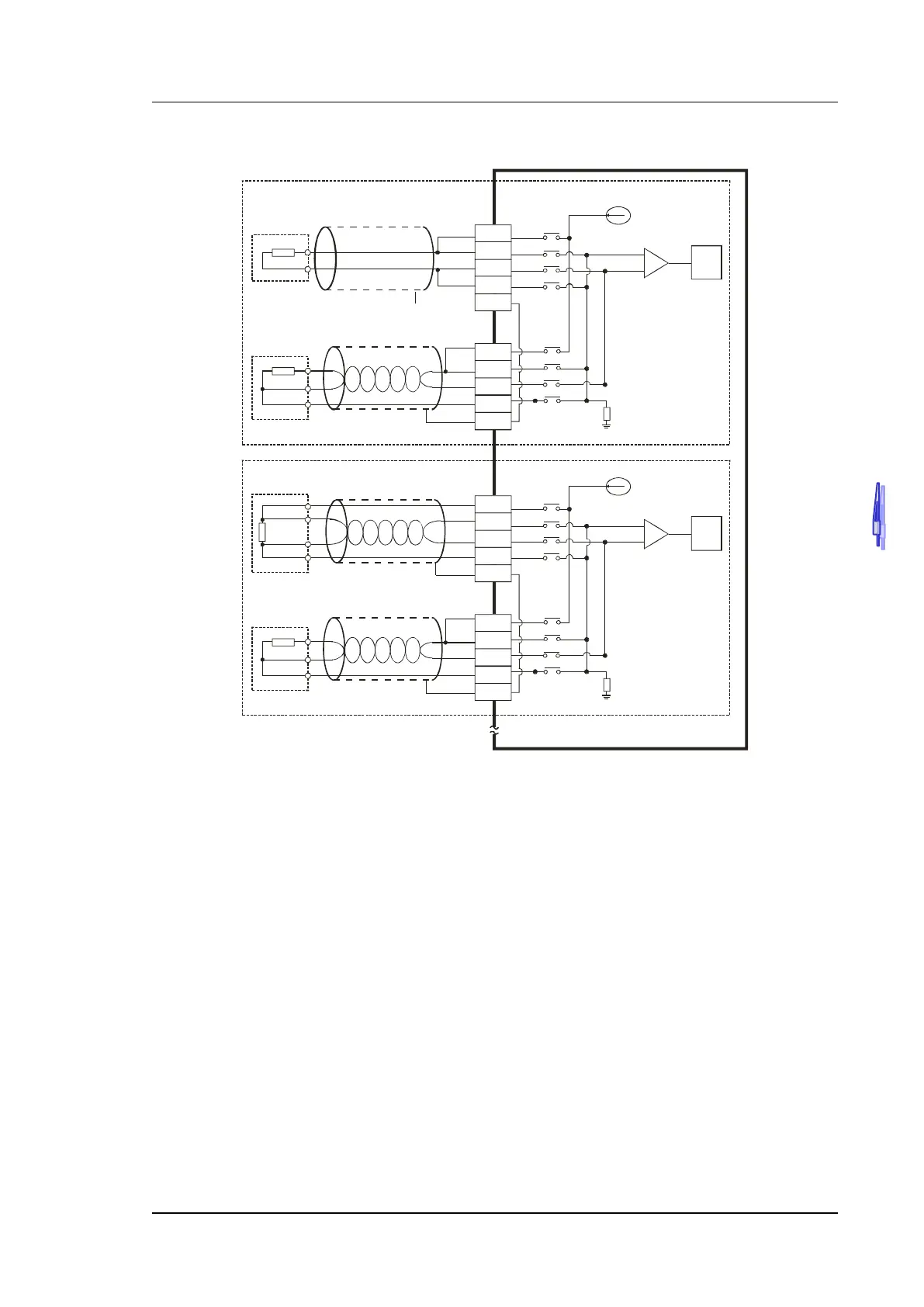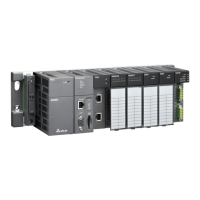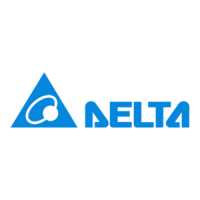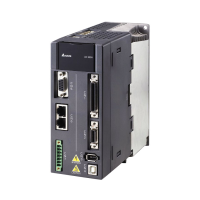Chapter 4 Installing Hardware and Wiring
4-75
4.10.2 Wiring AH08PTG-5A
Shielded c able * 1
471.5u
,
A
(Ni100Pt100,
Resistor)/
204.8uA
(Pt1000)*3
A DC
AG
INA
O0+
I0+
I0 -
O 0-
FG
CH 1
0~3 00
Ni 100/Ni 1000
Pt100/Pt1000
Ω
O1+
I1+
I1-
O1 -
FG
3-Wire
CH 0
+
-
471.5u
,
A
(Ni100Pt100,
Resistor)/
204.8uA
(Pt1000)*3
A DC
AG
INA
O2+
I2+
I2 -
O 2-
FG
CH 3
0~3 00
Ni 100/Ni 1000
Pt100/Pt1000
Ω
O3+
I3+
I3-
O3 -
FG
3-Wire
CH 2
4-Wire
Ni1 00/Ni1 000
Pt1 00/Pt1 000*2
+
-
0 ~300
Ni10 0/Ni10 00
P t10 0/Pt10 00
Ω
2-Wire
Shielded c able * 1
Shielded c able * 1
Shielded c able * 1
*1. The cable connected to the input terminal should be the cable or the shielded twisted pair cable which can
be connected to an Ni100/Ni1000/Pt100/Pt1000 sensor, and should be kept separate from other power
cables and cables which generate noise. Please use a three-wire temperature sensor. If users want to use
a two-wire temperature sensor, On+ and In+ must be short-circuited, and On- and In- must be short-
circuited. (n is in the range of 0 to 7.)
*2. If users want to measure resistance in the range of 0 Ω to 300 Ω, they can use a two-wire or three-wire
sensor instead of a four-wire sensor.
*3. User need to select an appropriate sensor. If an Ni100 temperature sensor, a Pt100 temperature sensor,
or a resistance sensor is used, the internal excitation current is 471.5 μA. If an Ni1000 temperature sensor,
or a Pt1000 temperature sensor is used, the internal excitation current is 204.8 μA.
◆ Note: use cables with the same length (less than 200 m) and use terminal resistors of less than 20 ohm.

